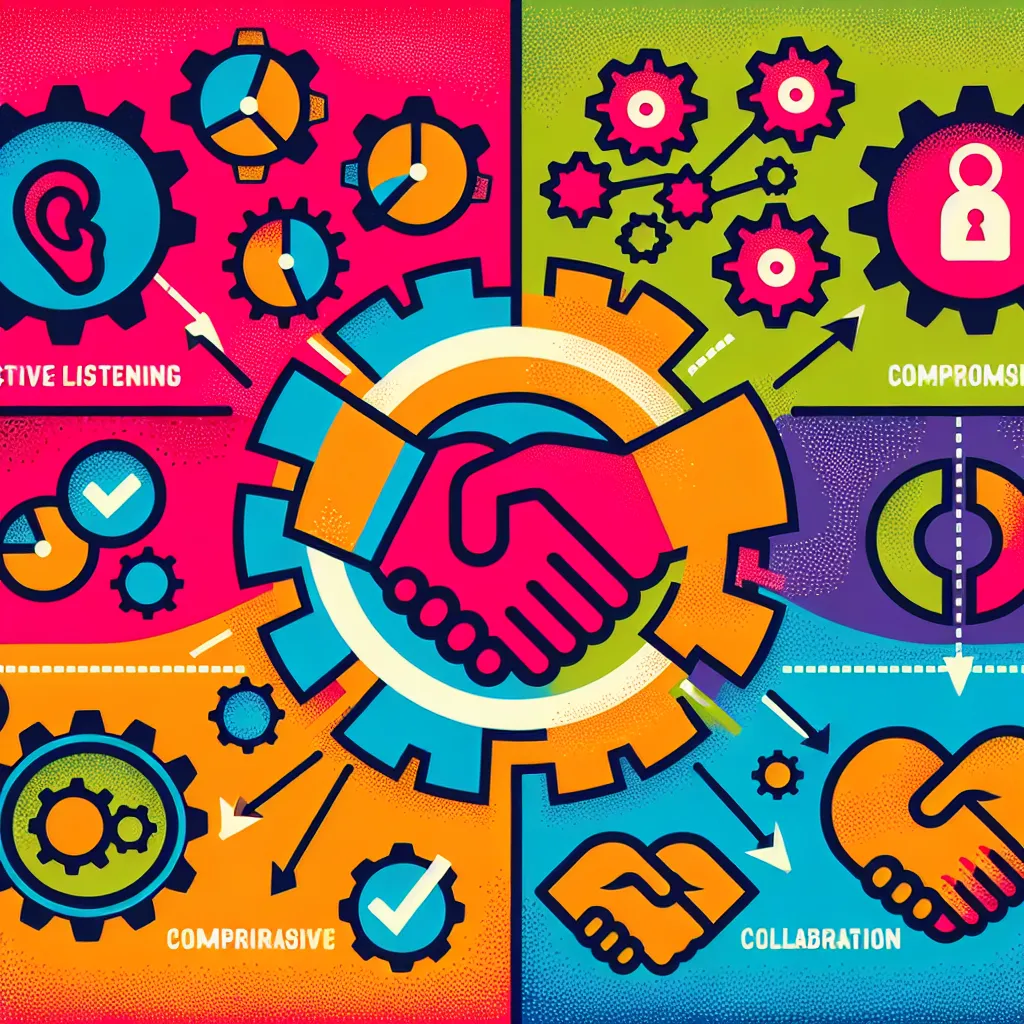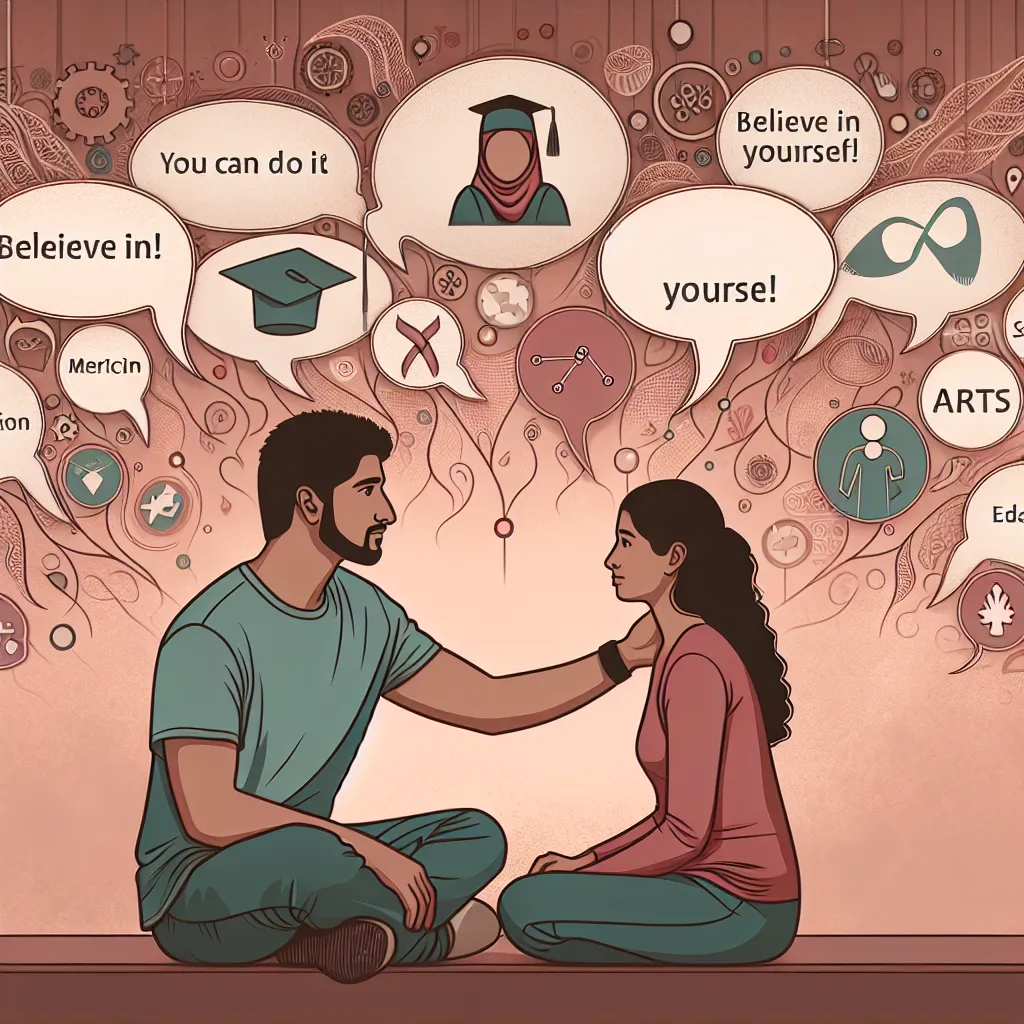As an experienced IELTS Speaking examiner, I understand the importance of providing practical guidance to help test-takers excel in their speaking assessment. In this comprehensive guide, we’ll focus on the topic “Describe a time when you had to solve a conflict” – a common theme that frequently appears in IELTS Speaking tests. We’ll explore effective strategies, sample answers, and essential vocabulary to help you achieve a high band score.
Nội dung bài viết
- Understanding the IELTS Speaking Test Structure
- Part 1: Introduction and Interview
- Question: Do you think conflicts are common in daily life?
- Question: How do you usually handle conflicts?
- Part 2: Long Turn
- Cue Card:
- Sample Answer (Band 8-9):
- Follow-up Questions:
- Part 3: Two-way Discussion
- Question: Do you think conflicts are always negative, or can they sometimes be positive?
- Question: How do you think globalization has affected conflict resolution in international business?
- Key Vocabulary and Phrases for High Scores
- Tips from an IELTS Examiner
Understanding the IELTS Speaking Test Structure
Before we delve into the specific topic, let’s briefly review the structure of the IELTS Speaking test:
- Part 1: Introduction and Interview (4-5 minutes)
- Part 2: Long Turn (3-4 minutes)
- Part 3: Two-way Discussion (4-5 minutes)
Now, let’s examine how the topic of conflict resolution might be addressed in each part of the test.
Part 1: Introduction and Interview
In this section, the examiner may ask general questions related to conflicts and problem-solving. Here are some potential questions and sample answers:
Question: Do you think conflicts are common in daily life?
Band 6-7 Answer:
Yes, I believe conflicts are quite common in our daily lives. We often encounter disagreements with family members, friends, or colleagues at work. It’s just a natural part of human interaction.
Band 8-9 Answer:
Absolutely. Conflicts are an inevitable aspect of human interaction. Whether it’s a minor disagreement with a family member over household chores or a more substantial dispute at work regarding project management, we frequently find ourselves navigating various levels of conflict in our day-to-day lives. The key lies in how we approach and resolve these conflicts constructively.
Question: How do you usually handle conflicts?
Band 6-7 Answer:
When I face a conflict, I try to stay calm and listen to the other person’s point of view. I think it’s important to understand both sides of the issue before trying to find a solution that works for everyone.
Band 8-9 Answer:
My approach to conflict resolution is multifaceted. Firstly, I make a conscious effort to remain composed and maintain objectivity. I believe in active listening to fully comprehend the other party’s perspective. Once I have a comprehensive understanding of the situation, I strive to find common ground and propose solutions that address the concerns of all involved parties. I find that this collaborative approach often leads to more sustainable resolutions and can even strengthen relationships in the long run.
 Conflict resolution strategies
Conflict resolution strategies
Part 2: Long Turn
In this section, you may be given a cue card related to conflict resolution. Here’s a sample cue card and response:
Cue Card:
Describe a time when you had to solve a conflict. You should say:
- What the conflict was about
- Who was involved
- How you resolved it
- And explain how you felt about the situation
Sample Answer (Band 8-9):
I’d like to talk about a significant conflict I had to resolve at my previous workplace. The dispute arose between two team members in a high-stakes project I was managing.
The conflict centered around a fundamental disagreement in the project’s direction. Sarah, our lead designer, advocated for a more innovative and risky approach, while Mike, the senior developer, insisted on a tried-and-tested method. Their disagreement was causing considerable tension within the team and threatening to derail our project timeline.
As the project manager, I knew I had to intervene decisively. First, I organized a meeting with Sarah and Mike separately to understand their perspectives fully. I realized that both had valid points – Sarah’s approach could potentially yield better results, while Mike’s concern about risks was legitimate.
To resolve the conflict, I facilitated a brainstorming session with both of them. I encouraged them to find a middle ground that would incorporate elements of both approaches. After some intense discussions and creative problem-solving, we managed to develop a hybrid solution that satisfied both parties.
This experience was both challenging and rewarding. Initially, I felt quite apprehensive about mediating such a heated disagreement. However, as we progressed towards a resolution, I felt a sense of accomplishment and pride in my team’s ability to overcome differences and collaborate effectively.
The situation taught me the importance of open communication, empathy, and flexibility in conflict resolution. It also reinforced my belief that conflicts, when handled properly, can lead to more innovative solutions and stronger team dynamics.
Follow-up Questions:
- Do you think this experience has made you better at handling conflicts?
- How important do you think conflict resolution skills are in the workplace?
Part 3: Two-way Discussion
In this section, the examiner will ask more abstract questions related to the topic. Here are some potential questions and sample answers:
Question: Do you think conflicts are always negative, or can they sometimes be positive?
Band 6-7 Answer:
I believe conflicts can be both negative and positive. While they can cause stress and problems, they can also lead to better understanding and solutions if handled well.
Band 8-9 Answer:
While conflicts are often perceived negatively, I firmly believe they can be catalysts for positive change. When approached constructively, conflicts can unveil underlying issues, promote deeper understanding, and foster innovation. They challenge us to reassess our perspectives and find creative solutions. In professional settings, conflicts can lead to improved processes, stronger team cohesion, and more robust decision-making. However, the key lies in managing conflicts effectively to harness their potential benefits while mitigating their destructive aspects.
Question: How do you think globalization has affected conflict resolution in international business?
Band 6-7 Answer:
Globalization has made conflict resolution more complex in international business. People from different cultures may have different ways of dealing with conflicts, which can lead to misunderstandings.
Band 8-9 Answer:
Globalization has profoundly impacted conflict resolution in international business, presenting both challenges and opportunities. On one hand, it has intensified the complexity of conflicts due to the intersection of diverse cultural norms, communication styles, and business practices. This diversity can lead to misinterpretations and escalate tensions if not managed properly.
Conversely, globalization has also fostered a greater awareness of cross-cultural dynamics, prompting many organizations to invest in cultural intelligence training and develop more nuanced approaches to conflict resolution. We’re seeing an emergence of global mediation techniques that blend Western and Eastern philosophies, creating more holistic and adaptable resolution strategies.
Furthermore, technological advancements driven by globalization have facilitated real-time communication and virtual conflict resolution platforms, enabling more immediate and collaborative problem-solving across geographical boundaries. This has, in many ways, democratized access to conflict resolution resources and expertise.
In essence, while globalization has complicated the landscape of international business conflicts, it has also catalyzed more sophisticated and inclusive approaches to resolving these disputes, ultimately contributing to more robust and resilient global business relationships.
Key Vocabulary and Phrases for High Scores
To achieve a high band score, it’s crucial to use a range of sophisticated vocabulary and phrases. Here are some examples related to conflict resolution:
-
To mediate (verb) /ˈmiːdieɪt/: To intervene between people in a dispute to help them resolve it.
Example: “As a team leader, I often have to mediate conflicts between team members.” -
Compromise (noun/verb) /ˈkɒmprəmaɪz/: An agreement reached by each side making concessions.
Example: “Finding a compromise was crucial to resolving the conflict.” -
To de-escalate (verb) /diːˈeskəleɪt/: To reduce the intensity of a conflict or potentially violent situation.
Example: “My first priority was to de-escalate the tension between the two colleagues.” -
Constructive criticism (noun phrase) /kənˈstrʌktɪv ˈkrɪtɪsɪzəm/: Feedback that is helpful and intended to improve something, rather than just criticize.
Example: “I encouraged team members to provide constructive criticism rather than personal attacks.” -
To find common ground (idiom): To discover shared interests or beliefs.
Example: “Despite their differences, we managed to find common ground on several key issues.”
Tips from an IELTS Examiner
-
Practice extensively: Familiarize yourself with various conflict scenarios and practice describing them fluently.
-
Use a range of vocabulary: Incorporate sophisticated words and phrases related to conflict resolution.
-
Structure your answer: In Part 2, use the cue card points to organize your response logically.
-
Provide specific examples: Use personal experiences or hypothetical situations to illustrate your points.
-
Show reflection: Demonstrate your ability to analyze situations and learn from experiences.
-
Stay relevant: Always keep your answers focused on the question asked.
-
Be confident: Speak clearly and maintain good eye contact with the examiner.
Remember, the key to success in the IELTS Speaking test is not just about answering the questions, but demonstrating your ability to communicate effectively in English. By following these guidelines and practicing regularly, you’ll be well-prepared to tackle any conflict-related questions in your IELTS Speaking test.
For more practice on similar topics, you might find it helpful to review how to describe a time when you had to work with someone difficult or describe a time when you had to manage a challenging project. These scenarios often involve conflict resolution skills and can provide additional context for your speaking practice.


